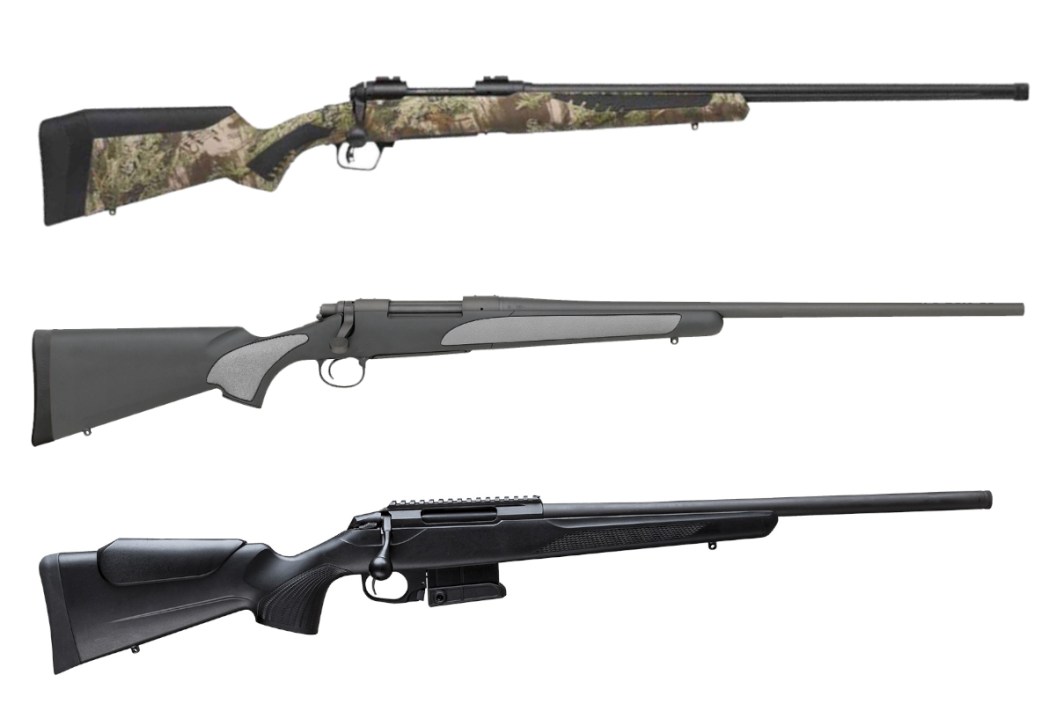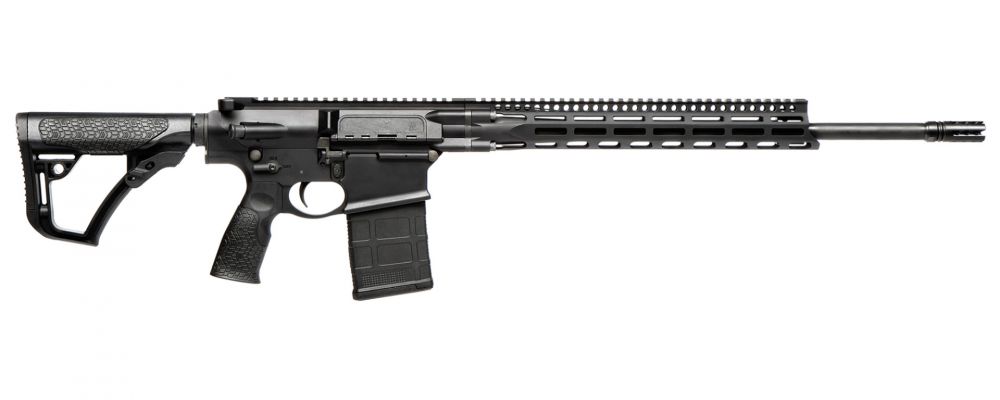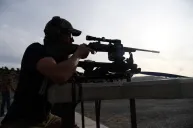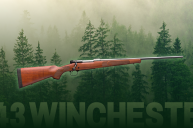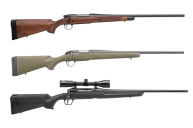The 260 Remington is a solid option for big game.
In the world of long range hunting rifles, the 260 Remington is often overlooked in the crowd. It's a Wildcat cartridge based on the iconic .308 Winchester that was first introduced by Remington back in 1997. This hunting cartridge is excellent for big game hunting, especially for whitetails, mule deer, and pronghorn antelope at long distances.
That makes it a versatile round for a variety of North American hunting scenarios. Even if it is significantly less popular than the .308 or 6.5 Creedmoor.
Today we'll explain just what makes the 260 Remington such a handy round and we'll recommend some of the best hunting rifles on the market today chambered for the fast, hard-hitting round.
260 Remington the round.
First, let's go over what makes the 260 Remington so unique. At first glance there's nothing special about it. It's another necked down variant of .308 Winchester with a 6.7mm bullet. The big difference between this and the .308 Winchester is that the 260 Rem has a much better ballistic coefficient which allows it to fly much flatter and deliver more energy to the target at great distances than the .308. In fact, it's become quite popular for long-range shooting competitions for that very reason. In fact, you'll often hear comparisons of trajectory to the mighty .300 Winchester Magnum, just without all that recoil.
When you start diving into the specs, there's a lot for shooters to like with this round. For a Hornady 130-grain ELD Match factory load, you're looking at a 2,840-fps muzzle velocity that drops to 2,675 fps at 100 yards. Remington's Core-Lokt soft point rounds have a 2,750-fps muzzle velocity with a 140-grain bullet weight. It only slows to about 2,544-fps at 100 yards. You'll get similar numbers from premium ammo like Nosler's 130-grain AccuBond Trophy Grade ammo. The Nosler bullets are flying about 2,700-fps at the muzzle and 2,518-fps at 100 yards.
Barnes' Vor-TX boattail 120-grain bullets offer 2,950-fps of muzzle velocity that slows to 2,723-fps at 100 yards. At the same time, this round is delivering 1,976-foot pounds of energy at that distance, which is nothing to sneeze at for factory ammunition. The cool thing about 260 Remington is that it lends itself well to reloading too.
In fact, you can neck down a 7mm-08 Remington or neck up a .243 Winchester brass to reload a 260 Remington rifle cartridge. Just because both use the same .308 Winchester parent case. It's just a little bit of extra versatility that could come in handy to handloaders in a pinch if you own multiple rifles. Speaking of which, let's look at some of the options currently on the market for this round. It may be a little harder to find a good 260 Remington. Only because it's not quite as popular as some of the other rounds we've mentioned earlier.
Tikka T3 Compact Tactical
The Tikka name is well known for high quality, accurate rifles and the T3x Compact is no exception. This rifle features a 24-inch barrel with a 1:8 twist rate to help you stay on target at extremely long range. These rifles have a metallic bolt shroud that helps protect the firing pin and rear bolt body while you are in the field. The modular stock allows each shooter to modify the angle of the grip to their own preferences. The better the rifle fits, the better you will shoot with it. It's a little on the heavy side at 8.6 pounds, but there's a lot to like about this short-action rifle that makes the extra weight worth it.
Savage 110 Predator
This one is obviously made with predator hunting in mind, but it's going to handle deer and antelope too. This rifle has a 24-inch carbon steel barrel with a 1:8 twist rate and a matte black finish. The stock is synthetic and features a Mossy Oak camo finish. We like the Savage for hunters who want a lot of versatility in their gun. Savage's AccuFit system allows you to change the length of pull and comb height quickly and easily to fit every shooter's frame. No gunsmithing required. The AccuTrigger system also allows at home adjustments to the weight of the trigger pull.
Remington Model 700 SPS
The classic rifle has gotten some upgrades over the years and the Special Purpose Stainless is an excellent choice for backcountry hunters who may encounter a lot of adverse weather conditions thanks to the synthetic stock. The carbon steel barrel is 24 inches long. The receivers come drilled and tapped for scope mounts right out of the box. Remington gives this one their X-Mark Pro adjustable trigger which allows you to change the weight to be as heavy or light as you'd like. This is a solid option to own a proven platform for under $1,000.
Daniel Defense DD5 V5
Most 260 Remingtons are bolt-actions, but there are a handful of semi-auto platforms for those who want fast follow-ups. The Daniel Defense is not cheap, but it is a gear sporting rifle platform that will help you take advantage of the 260 Rem's flat trajectory for hunting or target shooting. This rifle has a 20-inch cold hammer forged barrel that is chrome lined and Mil-Spec heavy phosphate coated. Daniel Defense ships this rifle with their Mil-Spec trigger standard. The lower receiver is CNC machined from 7075-T6 aluminum and has an anodized hard coat finish. There is also a six-position receiver extension to help better fit the rifle to your frame.
Ruger Hawkeye
This one is getting difficult to find, but the Hawkeye is a fantastic light and compact option for hunters who may wander in and out of dense brushy areas. The compact version of this gun has a 16.5-inch barrel with a 1:8 twist rate. That also keeps the overall length down to just 35.5 inches. Even with a black laminate stock, it only weighs a hair over six pounds which will make it a joy to pack deep into the backcountry. These rifles feature a three-position safety and Ruger's signature LC6 adjustable trigger system for even more functionality.
Products featured on Wide Open Spaces are independently selected by our editors. However, when you buy something through our links, we may earn a commission.
For more outdoor content from Travis Smola, be sure to follow him on Twitter and check out his Geocaching and Outdoors with Travis YouTube channels.
NEXT: .308 VS. .30-06: WHICH IS BETTER, AND FOR WHAT USES?
WATCH
